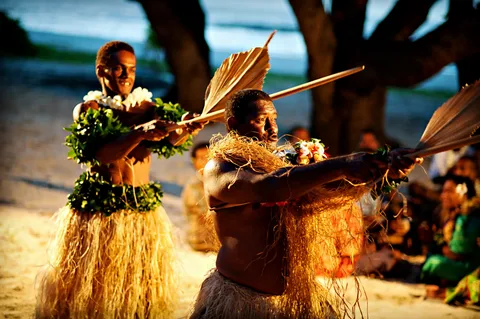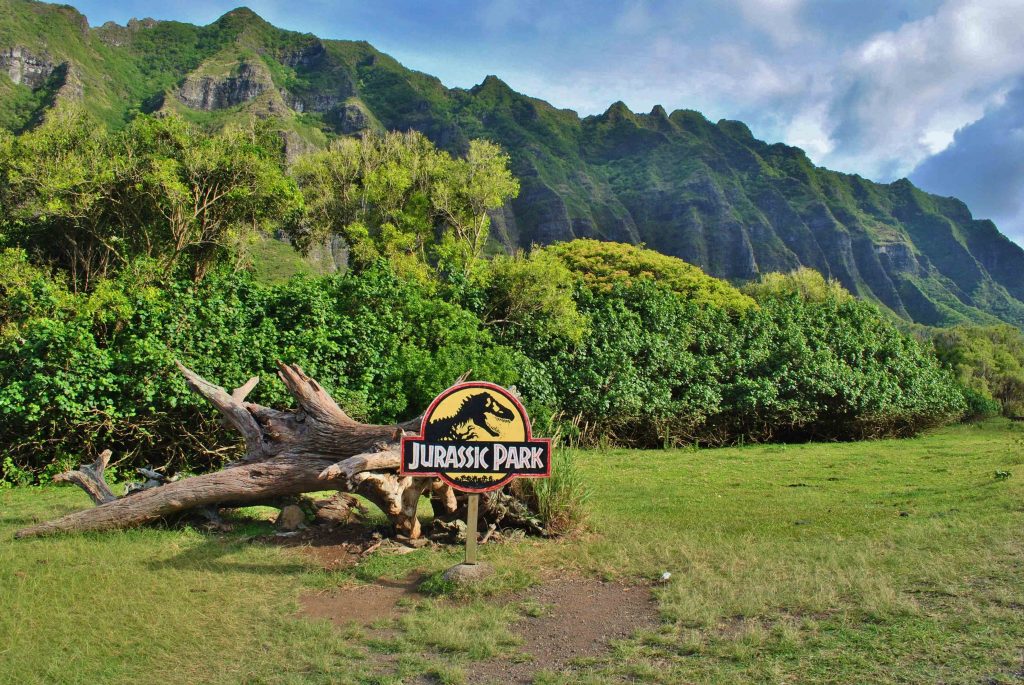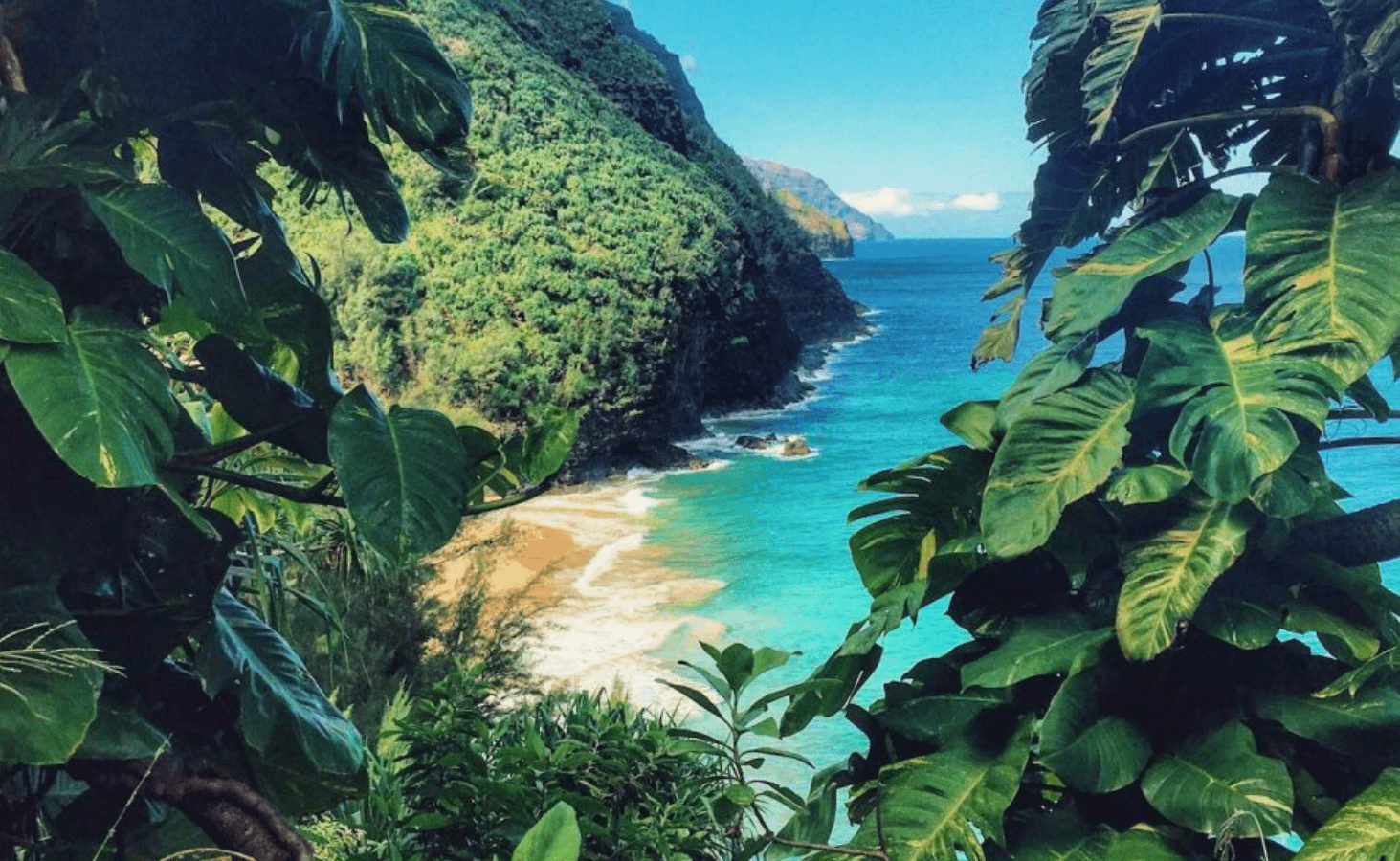Kauai in Hawaii: history and interesting facts about the island
The island of Kauai, located in the Hawaiian archipelago, is one of the most beautiful and unique places on the planet. With its expansive beaches, mesmerizing landscapes and rich cultural heritage, it attracts thousands of tourists and explorers every year.

Kauai, the second largest of the Hawaiian islands, embodies the entire world of Hawaii – sunny beaches, dense rainforests, majestic mountains and picturesque waterfalls. With its alluring natural beauty, the island attracts travelers from all over the world, offering them unique opportunities for relaxation and adventure.
What also makes Kauai unique is its cultural heritage and rich history. This island was the site of the first settlements of Polynesian settlers in Hawaii, giving it a special significance in the history of this archipelago. The traditions, customs and language of the ancient Hawaiians continue to live on Kauai, being passed down from generation to generation and giving the island its special flavor and atmosphere.
Thus, the island of Kauai in Hawaii is not only one of the most beautiful places on earth, but also has a unique history and cultural heritage that make it a truly amazing and exciting place to explore and discover.
Geography and Nature of Kauai

The island of Kauai, located in the Hawaiian archipelago, has unique natural features that make it one of the most breathtaking places on the planet. Geographical location Kauai is the 4th largest island in the Hawaiian archipelago and is located in the northwestern part of the Pacific Ocean basin. The northern part of the island tends to be wetter and greener, while the southern areas are drier and sandier.
Kauai’s main geographical feature is its diverse landscape. The island has high mountains framed by picturesque beaches. The most famous mountain formation is Waimea Canyon, sometimes referred to as the “Grand Canyon of the Pacific.” This canyon, which is about 16 kilometers long, up to 1 kilometer wide and about 900 meters deep, offers spectacular views of huge mountain ranges, red rocks and green forests.
In addition to the mountains, Kauai is known for its magnificent beaches. Immaculate sandy shores stretch for miles along the coast, inviting vacationers to enjoy the warm sun and turquoise waves of the Pacific Ocean. Kauai’s beaches are also renowned for their opportunities for snorkeling, surfing and other water sports.
The island is also known for its vast rainforests, where a diversity of flora and fauna thrive. These forests are a unique ecosystem that is home to many endemic plant and animal species, including Hawaiian monarchs and nectar birds.
Magnificent waterfalls also form an integral part of Kauai’s nature. The island abounds with many cascades, some of which, such as Waialili and Opaekaa Falls, present breathtaking views and inspire with their majesty.
Another unique natural formation that attracts tourists from all over the world is Na Pali Kust, a rocky coastline protruding from the ocean with vertical cliffs. This location is often used as a landscape for movies and has become an icon for the island of Kauai.
Overall, the geography and nature of Kauai is a unique combination of mountains, beaches, forests and waterfalls making it one of the most exciting places to explore and travel.
History of Kauai

The history of the island of Kauai is rich with events and influences from various cultures and peoples. Let’s begin by considering its geographical location. Kauai is one of the main islands of the Hawaiian archipelago, located northwest of the main island of Hawaii. It is the fourth largest island in the archipelago, with an area of about 1,430 square kilometers. The island is washed by the Pacific Ocean to the west and north, and is held back from the other islands in the chain mainly due to strong currents and winds.
The original settlements on the island of Kauai were established by Polynesian settlers in the distant past. The exact dates of the first settlements are unknown, but archaeological evidence indicates that people inhabited the island long before European explorers arrived. The Polynesians brought with them their culture, traditions and skills, which had a significant impact on the future development of the island.
The influence of the Polynesian settlers was evident in various aspects of life on the island. They contributed to agri-culture by introducing different types of plants and animals, as well as developing irrigation systems and tillage techniques. They also created their own system of social organization and cultural practices that left their mark on the lives of the islanders.
In the context of contact with European navigators and colonization, Kauai played an important role in Hawaiian history. The first documented European visit to the island was in 1778, when English navigator James Cook called here on his third circumnavigation of the globe. This visit paved the way for contact with Europeans and the subsequent colonization of the island.
The next important stage in Kauai’s history was contact with Russian and American traders. In the early 19th century, the Russian-American Company established trading settlements on the island and began trading in sea furs and other goods. Later, in 1815, Thomas Hames, an American merchant, became the first Western foreigner authorized to trade with Hawaii.
Kauai’s history is thus rich and varied, reflecting the influence of various cultures and peoples in shaping its society and culture. The island played an important role in contact with European navigators and the establishment of Hawaii as a key region of the Pacific Ocean.
Cultural heritage and traditions

The cultural heritage and traditions of the island of Kauai play an important role in the lives of its local people, as well as attracting the attention of tourists from around the world. For locals, culture is not only a source of pride and self-expression, but also a key element of their identity and social fabric.
The traditional customs of the island of Kauai are deeply rooted in the Polynesian culture that has existed in the archipelago for centuries. One important aspect of the culture is the aloha spirit, which is a spirit of hospitality, friendliness and respect for others. This spirit permeates various areas of local life, from everyday encounters to cultural events and celebrations.
Language also plays an important role in preserving the island’s cultural heritage. Although English is the official language of Hawaii, the Hawaiian language is still used in everyday communication among locals and in rituals. The desire to preserve the Hawaiian language is evident through educational programs, cultural events, and community efforts.
The arts also play a significant role in the island’s culture. Traditional Hawaiian crafts such as palm leaf weaving, wood carving, and shell jewelry making have been passed down through generations and are an important part of the cultural heritage. Local artists are also known for their works that reflect the beauty and spirit of Hawaii.
However, the preservation of cultural traditions and heritage on the island of Kauai faces challenges related to tourism and globalization. Interference from foreign influences, commercialization, and the development of the tourist industry can threaten the island’s unique culture and traditions. Many locals are concerned about maintaining the authenticity of their culture and are trying to balance attracting tourists with preserving their heritage.
Thus, the cultural heritage and traditions of the island of Kauai are an important part of its identity and appeal. They represent a rich heritage of Polynesian culture that continues to live and evolve in the modern world despite the challenges of modernity.
Interesting facts about Kauai

The island of Kauai has many interesting facts and unique features that attract the attention of locals and tourists alike. One such fact is that the island is often a popular location for movie filming. The famous movie South Pacific, directed by James Cameron, was filmed on Kauai, with many of its scenes shot on Hanalei Beach, which is one of the most beautiful beaches on the island. Kauai was chosen as the location for “South Pacific” because of its stunning natural beauty, picturesque beaches and mountainous scenery, which provide the perfect setting for filming movies describing a tropical paradise.
Another famous movie that was partially filmed on Kauai is Steven Spielberg’s “Jurassic Park.” This movie was filmed at various locations on the island, including Waimea Canyon, which was used as a location for scenes depicting the park’s restricted area. The choice of Kauai for the filming of Jurassic Park is due to its amazing natural beauty and diverse landscapes, which are perfect for creating impressive cinematic images.
In addition to movies, the island of Kauai is also rich in legends and myths that convey its unique cultural and historical essence. One such myth is associated with Mount Na Pali Kust, which is considered a sacred place by locals and is the source of many legends and legends. According to myth, ancestral spirits live on this mountain, protecting it and bringing prosperity to the island.
Unique natural phenomena and attractions can also be found on the island. For example, Waimea Canyon, sometimes called the “Grand Canyon of the Pacific,” is one of Hawaii’s most impressive geologic formations. The canyon has deep red rocks and stunning views that attract thousands of tourists each year. Another unique natural phenomenon of the island is Kalialei Falls, one of the highest waterfalls in the world, which falls from a height of about 442 meters.
Thus, the island of Kauai in Hawaii is an amazing place rich in interesting facts, legends and cultural heritage. Its beautiful scenery and unique natural formations make it an attractive tourist and filming destination, and its rich cultural and historical essence continues to inspire and amaze visitors from all corners of the world.
Conclusion

In conclusion, we can summarize the significance and beauty of the island of Kauai and discuss the importance of preserving its nature, culture, and historical heritage.
The island of Kauai is a unique and beautiful place that impresses with its picturesque scenery, richness of nature and deep cultural history. It attracts tourists from all over the world with its stunning beaches, majestic mountain peaks, amazing waterfalls and dense rainforests. The island is also famous for its cultural heritage and traditions, which have been passed down through generations and form an important part of its identity.
However, despite its beauty and richness, the island of Kauai faces a number of challenges and threats. The growth of tourism and globalization can have a negative impact on the environment, leading to the loss of unique natural areas and changing local traditions. Therefore, it is important to pay attention to the conservation and protection of the island’s nature, preserving its biodiversity and unique ecosystems. It is also necessary to preserve and pass on to future generations the rich cultural heritage of the island in order to preserve its identity and uniqueness.
Conservation of Kauai’s natural and cultural heritage is not only a matter of preserving the beauty and attractions of the island, but also of preserving the living space for its inhabitants and future generations. Decisions and actions to conserve nature and cultural heritage must be made with the interests and needs of both the local population and visitors to the island in mind.
Thus, the island of Kauai remains one of the most amazing places on Earth that deserves our admiration and respect. The preservation of its beauty, nature and cultural heritage must remain a priority for all who appreciate this unique piece of nature and history.
Contact us in any way:
Telephone: (954) 773-9667
E-mail: abs@absoluteinc.org





